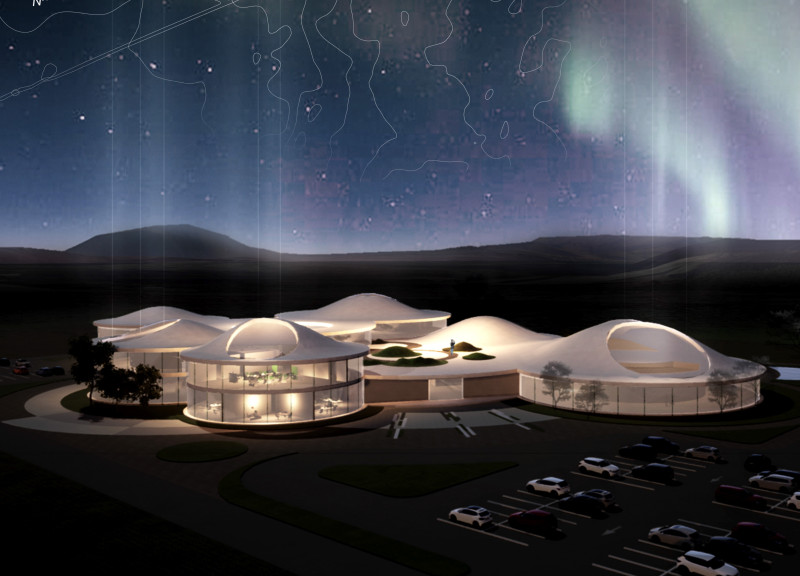5 key facts about this project
Museum Oruem is located in the picturesque Myvatn region of Iceland. The design draws inspiration from the local volcanic landscape, specifically the concept of a parasitic volcano. This means the building takes cues from natural formations that emerge alongside central volcanoes. The aim is to create a space that respects and enhances the natural surroundings, providing a cultural center for both residents and visitors.
Geological Integration
The design reflects the geological features of the area, both in its concept and its layout. By including a variety of spaces, such as a hall, museum reception, flexible exhibition rooms, and media areas, the building emphasizes how it connects to the environment. Visitors can expect views of natural wonders, particularly the Northern Lights, which play a significant role in the region’s identity. These connections foster an engaging experience that links the indoors with the outdoors.
Natural Light
Natural light is an important aspect of the design, with carefully positioned skylights enhancing the interior ambiance. The use of daylight throughout the museum contributes to a welcoming and warm atmosphere. As light shifts during the day, it interacts with the exhibits in ways that reflect the dynamic landscape outside, creating a fluid experience for those inside. This relationship emphasizes the connection between the museum and its natural environment.
Architectural Form
The overall shape of the museum mirrors the gentle contours of the Icelandic terrain, resembling small volcanic craters. This design minimizes the impact on the landscape and encourages exploration of both the building and the natural world around it. The flowing lines create a visual harmony that invites visitors in while emphasizing the beauty of the setting.
Materials and Sustainability
Although specific materials used in the construction are not detailed in the presentation, expected choices will prioritize sustainability. The focus will be on durable materials that fit into the natural context. This commitment to environmental responsibility enriches the design’s ethos and underscores the importance of integrating architecture with the surrounding ecosystem.
The carefully designed exterior reflects the volcanic landscape, drawing connections between the natural and the built environments. This thoughtful integration creates a space for cultural engagement, encouraging everyone who visits to explore the narratives of both the museum and the landscape it inhabits.






















































